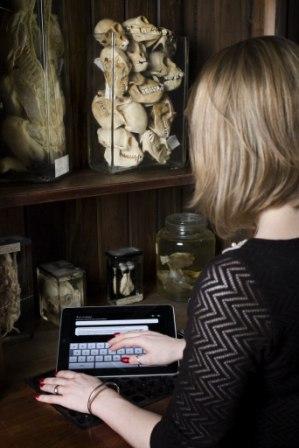Award for QRator and the Grant Museum
By Claire S Ross, on 17 May 2012

Last night a contingent from UCLDH, CASA and Museums and Public Engagement, headed down to the 10th Anniversary Museums and Heritage Awards.
There were 11 awards in total UCL, were up for three: The move of the Grant Museum for Project on A Limited Budget, the Grant Museum’s QRator project for Innovations and Heritage Without Borders for The International Award.
We are proud to announce that we won the Museum and Heritage Award for Excellence, Innovations award for QRator: Visitor Participation Through Social Interpretation.
QRator is a collaborative project developed jointly by UCL Digital Humanities , Centre for Advanced Spatial Analysis, and UCL Museums, with funding from the UCL Public Engagement Unit , to develop new kinds of content, co-curated by the public, and museum staff, to enhance museum interpretation, public engagement and meaning making by establishing new connections to museum exhibit content.
There’s a long list of people who need thanking and who were instrumental in creation, development, implementation and the ongoing support of the QRator project.
From UCL Museums and Public Engagement: Mark Carnall who worked with me originally in trialling QR codes in the Grant Museum and who is the most forward thinking curator I have ever met. Jack Ashby who writes the content and designs the displays for QRator, and who has the patience of a saint. Susannah Chan from UCL Museums and Public Engagement for inventing the mounts for the iPads. A big thank you to the UCL Public Engagement Unit for their funding and support of the project, Sally MacDonald Director of UCL Museums and Public Engagement who has been a huge driving force behind the project, it is so refreshing to have Top Down support for digital innovation in the cultural sector.
From UCL CASA: Steve Gray who is an absolutely brilliant developer, and whose skills in usability and interface design are second to none. Andy Hudson Smith, and Ralph and Martin the original team behind Tales of Things from UCL Centre for Advance Spatial Analysis,
From UCLDH: Melissa Terras and Claire Warwick who have been the best support, PhD supervisors I could ever ask for.
Without all of them this project would literally be nothing.
Oh and, a big thank you to the Jar of Moles for being the most discussed specimen!
 Close
Close


